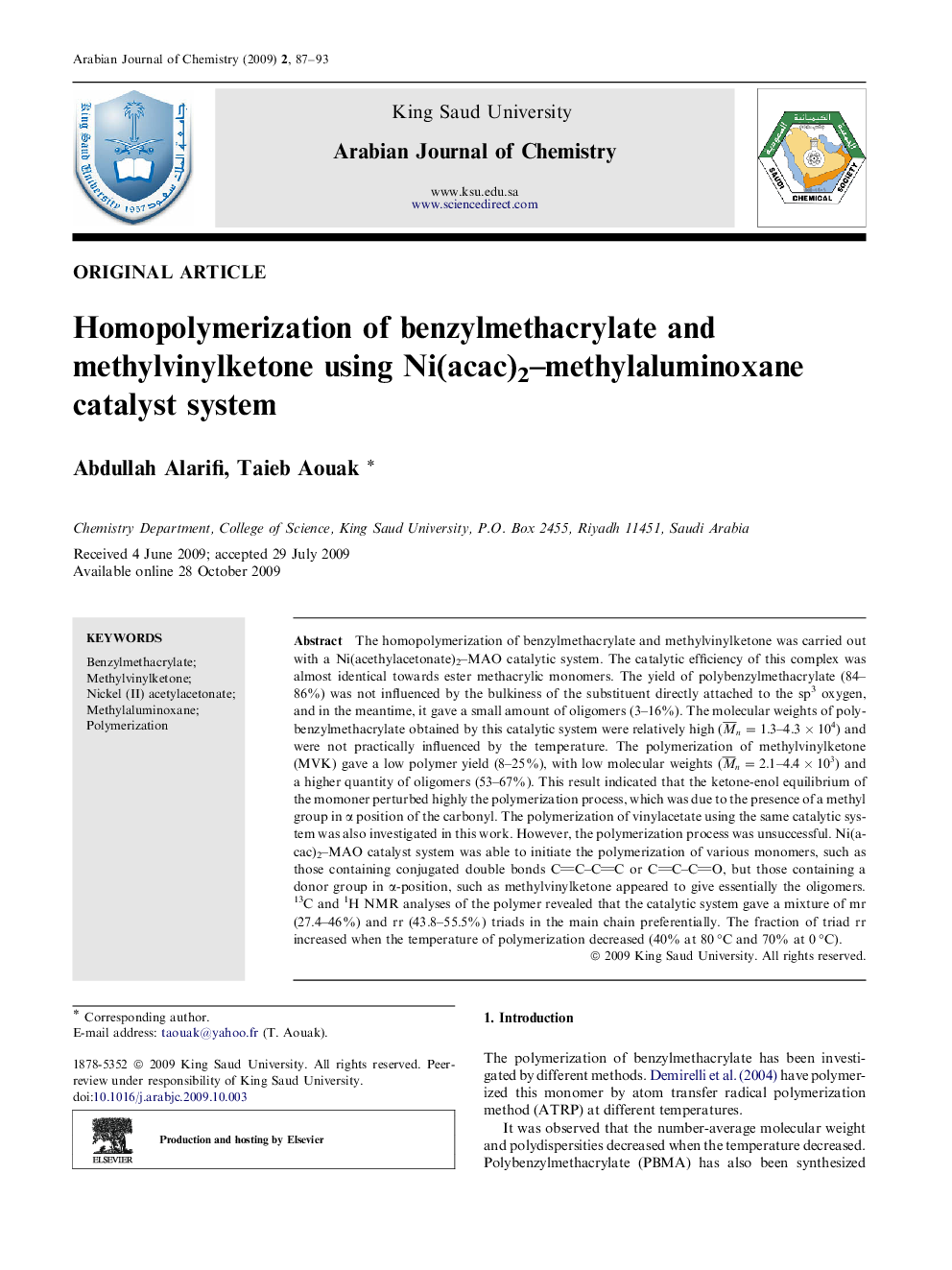| کد مقاله | کد نشریه | سال انتشار | مقاله انگلیسی | نسخه تمام متن |
|---|---|---|---|---|
| 1252910 | 1496063 | 2009 | 7 صفحه PDF | دانلود رایگان |

The homopolymerization of benzylmethacrylate and methylvinylketone was carried out with a Ni(acethylacetonate)2–MAO catalytic system. The catalytic efficiency of this complex was almost identical towards ester methacrylic monomers. The yield of polybenzylmethacrylate (84–86%) was not influenced by the bulkiness of the substituent directly attached to the sp3 oxygen, and in the meantime, it gave a small amount of oligomers (3–16%). The molecular weights of polybenzylmethacrylate obtained by this catalytic system were relatively high ( M¯n=1.3– 4.3×104) and were not practically influenced by the temperature. The polymerization of methylvinylketone (MVK) gave a low polymer yield (8–25%), with low molecular weights ( M¯n=2.1– 4.4×103) and a higher quantity of oligomers (53–67%). This result indicated that the ketone-enol equilibrium of the momoner perturbed highly the polymerization process, which was due to the presence of a methyl group in α position of the carbonyl. The polymerization of vinylacetate using the same catalytic system was also investigated in this work. However, the polymerization process was unsuccessful. Ni(acac)2–MAO catalyst system was able to initiate the polymerization of various monomers, such as those containing conjugated double bonds CC–CC or CC–CO, but those containing a donor group in α-position, such as methylvinylketone appeared to give essentially the oligomers. 13C and 1H NMR analyses of the polymer revealed that the catalytic system gave a mixture of mr (27.4–46%) and rr (43.8–55.5%) triads in the main chain preferentially. The fraction of triad rr increased when the temperature of polymerization decreased (40% at 80 °C and 70% at 0 °C).
Journal: Arabian Journal of Chemistry - Volume 2, Issue 2, October 2009, Pages 87–93